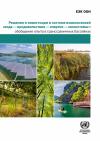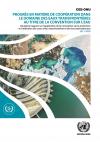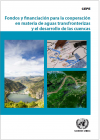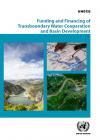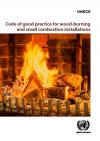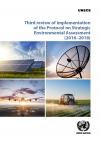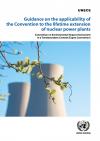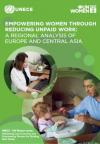Publications
Displaying Results 61 - 80 of 929
- Pусский
How can governments, other public and private actors learn about and better understand the water-energy-food-ecosystems nexus?
How can they use a ‘nexus approach’ to address the most pressing issues in transboundary water basins?
Last but not least, how can they design and implement ‘nexus’ solutions and investments that create synergies and provide transboundary benefits?
The new publication ‘
- Français
Comment les gouvernements et les autres acteurs publics et privés peuvent-ils apprendre et mieux comprendre le lien eau-énergie-alimentation-écosystèmes?
Comment peuvent-ils utiliser une "approche nexus" pour traiter les problèmes les plus urgents dans les bassins hydrographiques transfrontières?
Enfin, et surtout, comment peuvent-ils concevoir et mettre en œuvre des solutions et des
- English
The Convention on the Protection and Use of Transboundary Watercourses and International Lakes (Water Convention), hosted by the United Nations Economic Commission for Europe (ECE), requires Parties to prevent, control and reduce transboundary impact, use transboundary waters in a reasonable and equitable way and cooperate to ensure their sustainable management. Parties bordering the same
- Pусский
The Convention on the Protection and Use of Transboundary Watercourses and International Lakes (Water Convention), hosted by the United Nations Economic Commission for Europe (ECE), requires Parties to prevent, control and reduce transboundary impact, use transboundary waters in a reasonable and equitable way and cooperate to ensure their sustainable management. Parties bordering the same
- Français
La Convention sur la protection et l’utilisation des cours d’eau transfrontières et des lacs internationaux (Convention sur l’eau), dont le secrétariat est assuré par la Commission économique des Nations Unies pour l’Europe (CEE-ONU), exige des Parties qu’elles préviennent, maîtrisent et réduisent l’impact transfrontière, qu’elles utilisent les eaux transfrontières de manière raisonnable et
- Español
More than 60 per cent of the world’s freshwater flow is shared between two or more riparian states. The sustainable and cooperative management of these transboundary water resources is crucial for access to water, sustainable development as well as regional stability and peace. However, many countries and basins struggle to identify and mobilize the needed funding for transboundary water
- English
More than 60 per cent of the world’s freshwater flow is shared between two or more riparian states. The sustainable and cooperative management of these transboundary water resources is crucial for access to water, sustainable development as well as regional stability and peace. However, many countries and basins struggle to identify and mobilize the needed funding for transboundary water
- English
Domestic wood heating is a major source of emissions of particulate matter, including black carbon (BC), and organic pollutants, such as dioxins/furans, polycyclic aromatic hydrocarbons (PAHs) and benzo[a]pyrene (B(a)P), in the ECE region, resulting in poor local air quality conditions and significant negative effects on human health. The present document responds to the need to inform the
- Pусский
Most of the world’s water resources are shared between countries. These transboundary waters create social, economic, environmental and political interdependencies that make cooperation a precondition to sustainable development and peace. SDG indicator 6.5.2 measures cooperation on both transboundary river and lake basins, and transboundary aquifers. In this second report on SDG indicator 6.5.2,
- Français
La majorité des ressources mondiales en eau sont partagées entre les pays. Ces eaux transfrontières créent des interdépendances sociales, économiques, environnementales et politiques qui font de la coopération une condition préalable au développement durable et à la consolidation de la paix. L’indicateur 6.5.2 des ODD mesure la coopération relative aux bassins hydrographiques et aux aquifères
- Español
La mayoría de los recursos hídricos del mundo son compartidos entre varios países. Las aguas transfronterizas generan interdependencias políticas, sociales, económicas y ambientales que hacen de la cooperación en materia de aguas transfronterizas una condición previa para el desarrollo sostenible y la paz. Mediante el indicador 6.5.2 de los ODS se mide la cooperación transfronteriza tanto en las
- English
Most of the world’s water resources are shared between countries. These transboundary waters create social, economic, environmental and political interdependencies that make cooperation a precondition to sustainable development and peace. SDG indicator 6.5.2 measures cooperation on both transboundary river and lake basins, and transboundary aquifers. In this second report on SDG indicator 6.5.2,
- العربية
Most of the world’s water resources are shared between countries. These transboundary waters create social, economic, environmental and political interdependencies that make cooperation a precondition to sustainable development and peace. SDG indicator 6.5.2 measures cooperation on both transboundary river and lake basins, and transboundary aquifers. In this second report on SDG indicator 6.5.2,
- English
- English
The report looks at the current situation of women’s labour force participation in Serbia, unemployment and activity rates, the gender pay gap and the linkages between women’s employment, childcare provision and family policies (including maternity and parental leave). It explores how childcare provision affects women’s labour market participation. The report examines the impacts of COVID-19
- English
- English
The Guidance on the Applicability of the Convention to the Lifetime Extension of Nuclear Power Plants was prepared by an ad hoc working group co-chaired by Germany and the United Kingdom of Great Britain and Northern Ireland, as mandated by the Meeting of the Parties to the Convention on Environmental Impact Assessment in a Transboundary Context (ECE/MP.EIA/27/Add.1–ECE/MP.EIA/SEA/11/Add.1,
- English
The Report presents a thematic regional analysis of unpaid work of women in Eastern Europe and Central Asia (EECA) and the resulting empowerment women gain when their responsibility for such work is reduced. The report concludes with policy recommendations that prioritize the importance of unpaid work as a barrier to women’s economic empowerment. Removing this barrier require specific
- English
Opportunities and challenges for gender equality in the COVID-19 recovery
COVID-19 has highlighted the importance of investment in the care economy for successful response, recovery and “building back better” from the pandemic. The report provides evidence on UN Economic Commission for Europe (UNECE) member states´ efforts to secure and expand care-focused investment during the pandemic response
- English
This assessment was conducted between 18 June 2020 and 3 June 2021 with the objective of analysing the developments and challenges in the management of biodiversity and protected areas (PAs) in 14 countries that carried out and completed a ECE Environmental Performance Review (EPR) under its 3rd cycle (further 3EPR) since 2014. This includes Albania (2018), Belarus (2016), Bosnia and Herzegovina


